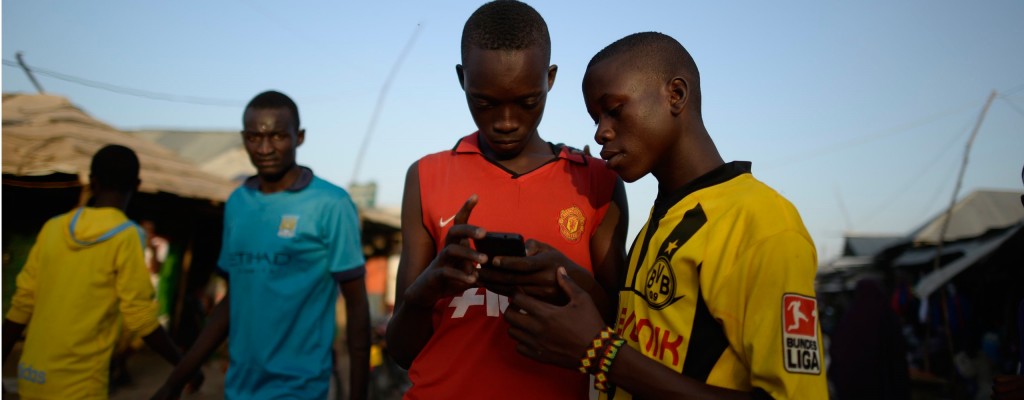It seems like everyday I see a new “Open Innovation Challenge” being launched with a call for the most creative minds to come together and share their brilliant solutions.
The open innovation challenge model has been widely adopted across the private sector, where it’s generally easier to implement solutions compared to humanitarian agencies who have different risks and hurdles to overcome.
With so many different challenges and platforms out there, we were interested in how this model was being adapted in the humanitarian space. Does open innovation work in every context, or are there environments that are more ripe for open innovation? What are the risks for adopting this model when you’re working in an emergency context? Can we create real impact for vulnerable communities by using this tool?
As an organization that has its own innovation platform, we had a lot of questions.
So we brought together the “dream team panel” for our monthly #Innov4Good Google Hangout, hosted with Plus Social Good, to get a better picture of what exactly this model can bring to humanitarians and the communities they work with.
The dream team panel consisted of Jenny Turner – Challenge Coordinator, EWB Australia; Vincent Graf – ICT Innovation Officer, ICRC; Olivia O’Sullivan – Innovation Analyst, Department for International Development (DFID); Norah Maki – Academic Partnerships Lead, UNICEF Innovation; Matt Chapman – VP and Head of ROW Innovation Services and our very own Corinne Gray, Innovation Engagement Officer as the moderator.
The conversation was one of our most interesting to date with a lot of lessons learned, some group therapy and a great exchange of opinions on the role this tool has in crowdsourcing solutions to global challenges. One big takeaway I had from the panel was that there isn’t one right way to do this, and that’s okay.
In case you missed it, we rounded up some of the best quotes from our panelists. You can also watch the whole chat in the video below.
1. Open innovation is about combining internal and external resources to create efficient and beneficial solutions. – Dr. Matt Chapman, Mindjet
2. Our measure of success is engagement and how people who participate in challenges go on to apply innovation processes and ideas learned. – Norah Maki, UNCIEF Innovation
3. You need beneficiaries to have a voice in the creation of the open innovation challenge. – Jenny Turner, EWB Australia
4. In the end, open innovation is not for you – it is for the communities you are serving.
– Jenny Turner, EWB Australia
5. Being able to define success of open innovation is understanding the true objective of your challenge. – Norah Maki, UNCIEF Innovation
6. Technical and resource capacity need to be considered so that you can actually implement the ideas. – Jenny Turner, EWB Australia
7. One risk major risk we have in this area is that in humanitarian organization sometimes people don’t feel like they’re legit enough to give ideas. We’ve seen this where people say: you have this challenge but who am i to tell you how to save lives? – Vincent Graf, ICRC
8. We have a tendency to put an emphasis on the technology and platform. But behind these tools there is a human process and real human element. It is possible to go into your communities and do participatory workshops to source the ideas.
– Corinne Gray, UNHCR Innovation
9. You must always ask “Now what?” during an innovation challenge so that you can properly mentor ideas. What will happen to these projects in a couple of years? – Olivia O’Sullivan, DFID
10. The nature of an online platform leaves out the unconnected. If we’re promoting a human-centred design approach, we risk having a user-centered design challenge that leaves out the users. – Norah Maki, UNICEF Innovation
11. Terms like “risk” and “experimenting” can be tricky when you are trying to save lives. – Corinne Gray, UNHCR Innovation
12. If an organization is willing to see new ideas and willing to experiment they can use the open innovation model. The key is to selecting the right challenges.
– Jenny Turner, EWB Australia
13. Challenges ask great questions. How can we do something better? Open innovation is about asking to do more with less, to do things better and faster and to get a great diversity of insight. – Matt Chapman, Mindjet
Click on the video below to watch the whole exciting discussion on open innovation in the humanitarian space:
Are you interested in learning more about open innovation programs? Go ahead and explore some of the platforms our panelists are currently using:
UNHCR: UNHCR Ideas
Department for International Development: Amplify Challenge
ICRC: Red Innovation
UNICEF Innovation: Wearables for Good Challenge
Do you have any experiences in running an open innovation challenge? Tell us about your platform and best practices in the comments below.
Photo credit: UNHCR/Benjamin Loyseau
If you’d like to repost this article on your website, please see our reposting policy.

